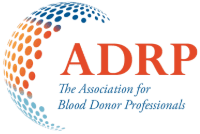Using the Health Action Process Approach to predict blood donation intentions and return behavior following a vasovagal reaction for whole blood and plasma donors
Full article available for purchase in link provided
Authors
Amanda Thijsen, Carley N. Gemelli, Tanya E. Davison, Barbara Masser
Abstract
Background
To inform the development of interventions to retain donors following a vasovagal reaction (VVR), the aim of this study is to use the Health Action Process Approach (HAPA) to identify predictors of intentions to re-donate and actual return behavior among whole blood (WB) and plasma donors who experienced a VVR.
Study Design and Methods
A total of 1136 WB donors (Mage = 32.4 ± 12.5 years; 73.4% female) and 1141 plasma donors (Mage = 36.5 ± 14.4 years; 73.3% female) completed an online survey after experiencing a VVR. Two hierarchical regression analyses were conducted for each donation type. In the first analysis, donation intentions were regressed onto the motivational HAPA constructs and social support. In the second analysis, donor return within 6 months was regressed onto social support, intentions, and the volitional HAPA constructs.
Results
The motivational and social support variables accounted for 47.2% of the variance in intentions to return in WB donors and 15.7% in plasma donors. For both groups, task self-efficacy, positive and negative outcome expectancies, and social support were significant predictors of intentions to return. Intentions and action planning were significant predictors of donor return in both groups, and recovery self-efficacy was significant for plasma only.
Conclusion
The HAPA model can provide guidance to blood collection agencies to design phase-specific and individually-focused interventions to retain WB and plasma donors following a VVR.
August 4, 2022
Related Resources
Engaging blood donors as advocates Social media preferences and associations with marketing
Background: Various critical medical procedures would become impossible without blood donations—saving lives in emergencies, surgeries, and chronic conditions like thalassemia. Therefore, it seems crucial to enhance donor recruitment and ensure…
Rethinking the role of older donors in a sustainable blood supply
INTRODUCTION Many countries, particularly high human development index countries, are facing the challenge of an aging population.1 For Blood Collection Agencies (BCAs) in these countries, an aging population poses two…


